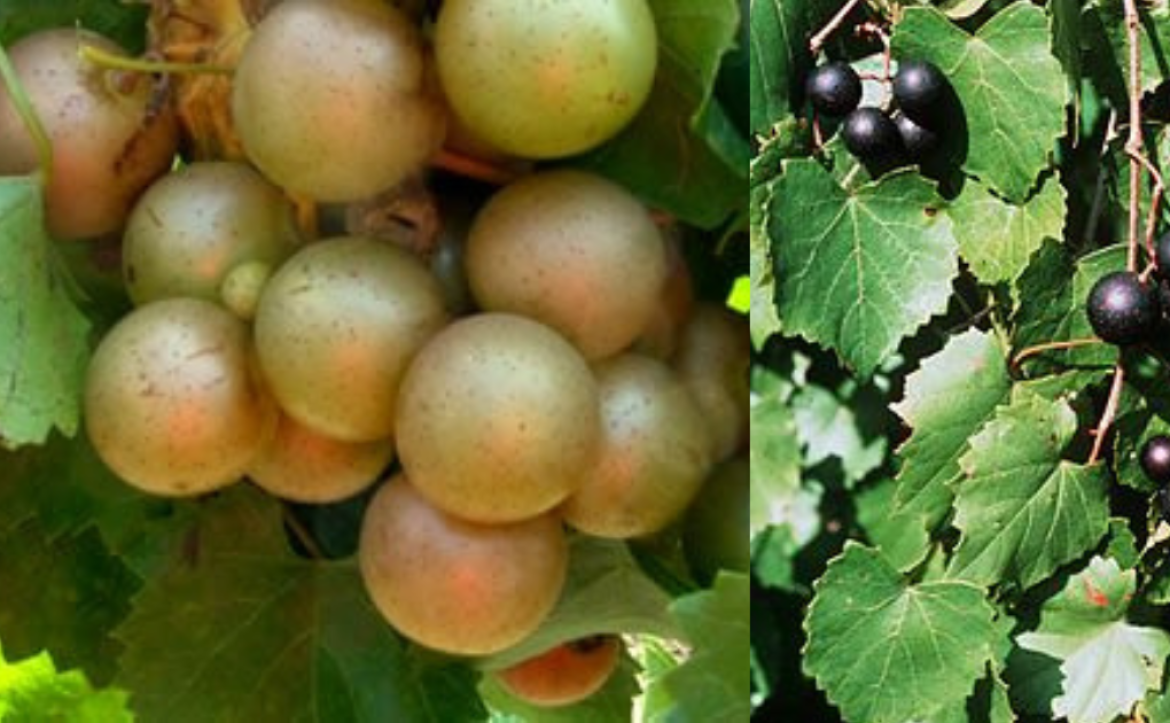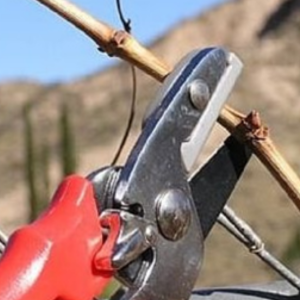
The scientific name for muscadine is Vitis rotundifolia, a grape species native to the United States. It has been widely cultivated since the 16th century, with around 152 varieties of muscadine grown in our southern regions, including red, bronze, and black varieties, which are common grape cultivars. Muscadine vines typically begin yielding fruit within three to five years, with a commercial production potential of 20 to 45 tons per hectare, equivalent to 8 to 18 tons per acre. Muscadine thrives best in loamy, silty soils.
For beginners, purchasing muscadine seedlings from established nurseries or horticulturists is recommended over sowing muscadine seeds. Opt for potted plants in two to three-gallon containers. When it comes to planting muscadine seedlings, consider starting your journey with bareroot plants.
Things you need to know
There are two types of muscadine depending on the flower
Self-fertilizing muscadine:
They do not need a pollinator and are self-pollinating.
Self-sterilizing muscadine:
As they are female types, they are for both fruit production and pollination. Self-fertilizing muscadine should be planted close to seedlings.
When buying seedlings, you must ensure that more than one plant will be needed for pollination.
Requirements
Soil for muscadine:
It thrives well in hot and humid climates and tolerates summer heat. Avoid wet soil throughout the year and maintain proper drainage.
Soil Drainage Test:
Before planting, conduct a soil drainage test in the area where you will plant muscadine. Dig a hole one foot by one foot deep at the planting site and fill the hole with water, then observe how long it takes for the water to drain. Refill the hole with water, this time observing clockwise to see if the water level in the soil decreases at a rate of 1 inch per hour. If drainage is rapid, the soil is sandy, indicating a dry site that requires organic matter to retain moisture. If drainage is slow, improve it by planting the seedling in a high-mounded area.
Determination of Soil pH:
Muscadine grows best in acid to slightly acidic soils, ranging from 5.5 to 6.5 on the pH scale. Typically, garden soil has a pH ranging from 6.0 to 7.0, which is the average garden pH value.
Soil pH Test:
Soil pH measures the alkalinity or acidity on a scale from 1 to 14, with seven being neutral. Any number less than seven means it’s acidic, and anything greater than seven means it’s alkaline. Test the pH of the soil where you will plant the muscadine seedlings using a soil pH tester probe. To increase soil alkalinity, add pelletized limestone, and to decrease pH, use sulfur or aluminum sulfate. Additionally, maintaining acidic soil conditions can be achieved by using organic compost fertilizer.
How to Plant a Muscadine Seedling
Spacing for Muscadine:
After planting muscadine, you may want to provide a fence as the seedlings begin to grow. The seedlings will need training to grow upward. This fence will encourage your muscadine seedlings to reach heights of up to 16 feet.
Guidelines for Bare Root Planting
First, to plant a muscadine seedling, dig a hole one foot deep and three times the width of the root ball. Place the soil removed from the hole in a wheel shape around the perimeter.
If your soil is clay, mix it well with the soil removed from the hole at a ratio of 25%. If the soil is sandy, mix it well with topsoil and a little peat moss to retain moisture. Do not use compost when planting these seedlings.
When removing your seedling from its container, be careful not to damage the main roots and small tops of the seedling. They must be kept intact.
Add some backfill mix to the bottom of the hole with the top end of the root ball slightly above the soil, then plant the seedling. At the time of planting, after filling the hole halfway, you can soak the soil in the hole and then backfill the upper edge of the root ball. Do not put any soil on the root ball, as it can hinder the plant’s breathing.
After planting the muscadine, water regularly for several weeks to keep the soil moist. Be careful not to let the soil stay wet and apply a two to three-inch layer of pine straw.
Bare Root Planting:
Soak these bare root muscadine roots in water for about two to three hours.
When planting muscadine seedlings, cut off any broken roots around the taproot and plant the seedling in a one-foot by one-foot wide hole. It is better if the hole is slightly deeper than the nursery hole.
Cover the roots with about 6 inches of soil and tamp down, but do not tamp heavily, even if you fill it with the remaining soil.
After planting, simply prune the vine to a vigorous cane.
Water regularly.
Nutrients
100 grams of muscadine grapes contain the following nutrients according to the USDA
Energy: 57 kilocalories
Fats: 0.47 g
Carbohydrates: 13.93 g
Dietary Fiber: 3.9 g
Protein: 0.81 g
Calcium: 37 mg
Phosphorus: 24 mg
Potassium: 203 mg
Sodium: 1 mg
Vitamin C (total ascorbic acid): 6.5 mg
Riboflavin: 1.5 mg
References
1 . USDA, NRCS (n.d.). “Vitis rotundifolia”. The PLANTS Database (plants.usda.gov). Greensboro, North Carolina: National Plant Data Team.
2 . “America’s First Grape – The Muscadine”. United States Department of Agriculture. November 1997.

cutting
